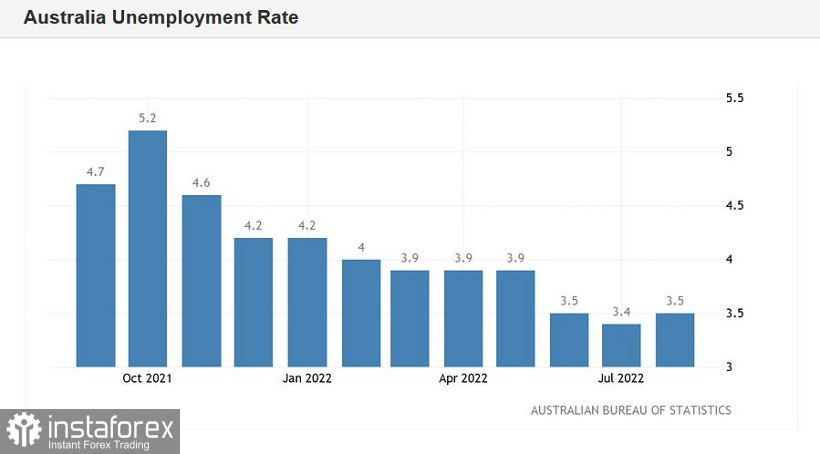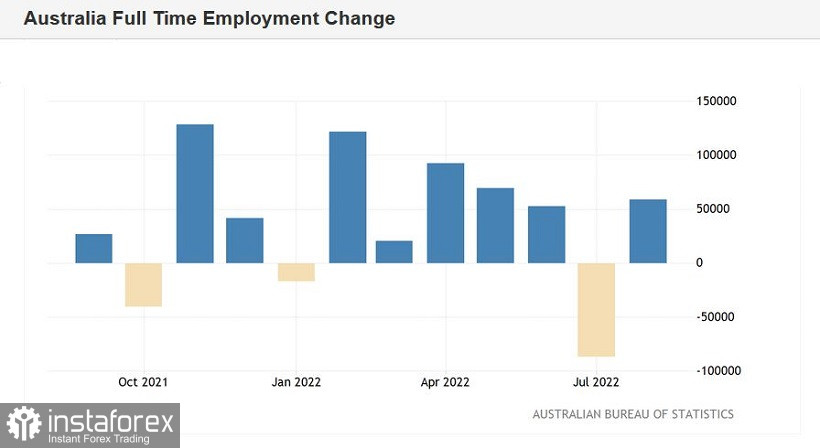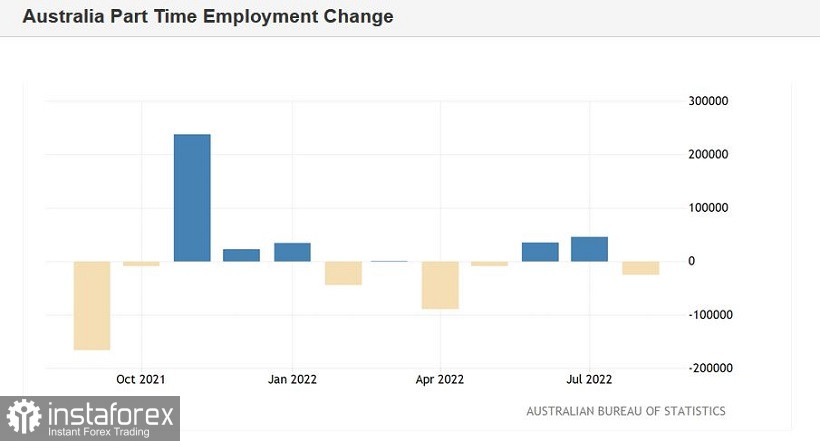The Australian dollar continues to be under severe pressure against the US dollar. On Tuesday, the AUD/USD pair plummeted by almost 200 pips in a few hours amid a general strengthening of the greenback. The Aussie once again demonstrated its vulnerability because the currency was moving upwards during an upward correction last week. However, AUD failed to move higher. In just one day, it sharply dropped to 0.6700 from 0.6900.

The Australian labor market data released today showed gains and suggests that the Australian dollar is likely to remain vulnerable. All components of today's report came out in the red, despite the rather weak forecasts.
In particular, unemployment in August returned to 3.5%, while most experts were confident it would remain at 3.4%. The indicator is of a lagging nature. In July, the employment growth rate unexpectedly decreased by 40,000. This component was in negative territory for the first time this year. In August, the number of employed grew but the result was weaker than forecasted - 33,000 instead of the forecasted growth of 39,000.
In general, we cannot say that Australian Nonfarms strongly disappointed the markets despite the fact that the components came out in the red zone. Deviations from forecasts are minimal. Unemployment remains more than acceptable to the RBA, and August's employment growth rate showed a positive trend, unlike July's one. Moreover, the structure of the August figure suggests that overall growth was driven by full-time employment. Whereas part-time employment showed a negative result of +58/-25. Full-time positions tend to offer higher wages and a higher level of social security than temporary part-time jobs. Therefore, the current trend is extremely positive.
In other words, the released report was not so bad. The other problem is that the Australian Nonfarms failed to provide support for AUD/USD buyers. The published numbers will not allow the RBA to be overly aggressive but they will not prevent a 25 basis point rate hike at the three remaining meetings this year either.



Notably, the Australian regulator increased the rate by 50 points during the three previous meetings. However, the latest signals voiced by the RBA indicate that the Central Bank is ready to slow down the pace of monetary policy tightening. Many experts, in particular, strategists at UOB Group, suggest that the Reserve Bank of Australia will pause monetary policy tightening after reaching the target rate of 3.1%. This requires a 25 basis point rate hike at each meeting this year in October, November, and December. Today's report allows the RBA to do that and prevents it to act more aggressively.
Such conclusions do not provide support for the Australian currency. That is why the Aussie continues to follow the greenback today. The AUD/USD pair, by and large, mirrors the trajectory of the US dollar index. For example, today's strengthening of the American currency was reflected in the behavior of the AUD/USD as well.
The reasons for that are obvious. The Fed acts more confidently and aggressively than the RBA. The latest US inflation reports suggest that the Fed will maintain its aggressive pace of monetary policy tightening at least until the end of this year. We are talking about a 75-point interest rate hike not only in September but also in November and December. Hawkish expectations are rising ahead of the September meeting, providing additional support for the greenback.
Thus, the current fundamental background suggests that short positions are a priority in the AUD/USD pair.
From the technical point of view, the pair is still between the middle and bottom lines of the Bollinger Bands indicator and below all lines of the Ichimoku indicator (including the Kumo cloud) on the daily chart. In addition, the Ichimoku cloud formed a bearish signal, which warns about further price declines. All the above suggests that selling from the current levels on a pullback can be considered as the support of 0.6700, which is the bottom line of the Bollinger Bands on the daily chart. In this area, it is better to close short positions because bears are unlikely to pierce that support in the medium term.
 English
English 
 Русский
Русский Bahasa Indonesia
Bahasa Indonesia Bahasa Malay
Bahasa Malay ไทย
ไทย Español
Español Deutsch
Deutsch Български
Български Français
Français Tiếng Việt
Tiếng Việt 中文
中文 বাংলা
বাংলা हिन्दी
हिन्दी Čeština
Čeština Українська
Українська Română
Română

